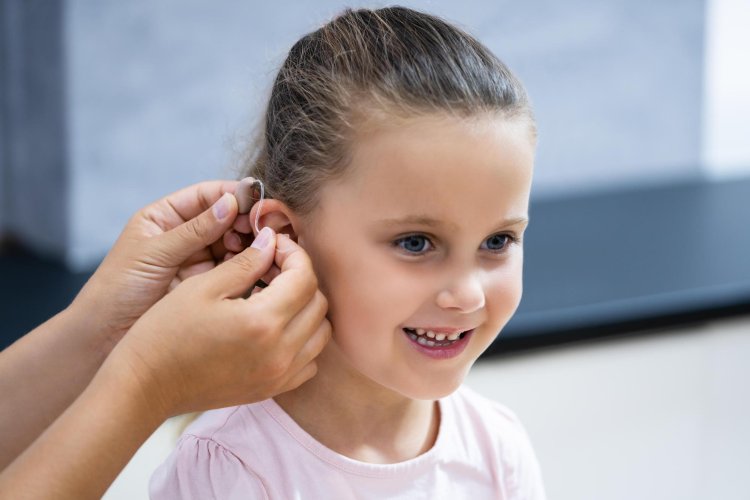In-Depth Exploration of Cochlear Implants: A Comprehensive Overview
Cochlear implants, often hailed as bionic marvels, represent a transformative solution for individuals grappling with severe to profound hearing loss. This comprehensive article aims to delve deeper into the intricacies of cochlear implants, offering a detailed examination of their functioning, surgical intricacies, post-operative rehabilitation, outcomes, and considerations.

Understanding Auditory Physiology
The journey of sound through the auditory system is a marvel of biological engineering. Sound waves enter the ear canal, causing vibrations of the tympanic membrane (eardrum). These vibrations are transmitted through the ossicles (malleus, incus, and stapes) in the middle ear, culminating in the cochlea's stimulation. The cochlea, resembling a snail shell, contains thousands of sensory hair cells bathed in fluid. When these hair cells are stimulated by mechanical vibrations, they convert the stimuli into electrical impulses, which are then relayed via the auditory nerve to the brain for interpretation.
Mechanism of Cochlear Implants
Cochlear implants represent a remarkable feat of technology, mimicking the natural auditory process to restore hearing sensation in individuals with profound hearing loss. Unlike traditional hearing aids, which amplify sound waves, cochlear implants function by bypassing damaged or non-functional hair cells within the cochlea. The implant system comprises external and internal components intricately designed to capture, process, and deliver auditory stimuli to the auditory nerve.
The external component consists of a microphone, speech processor, and transmitter coil. The microphone captures environmental sounds, which are then processed by the speech processor into digital signals. These signals are transmitted wirelessly to the internal receiver-stimulator unit through the transmitter coil. The internal component, surgically implanted beneath the skin, decodes the digital signals into electrical impulses and delivers them to specific electrodes positioned within the cochlea. These electrodes directly stimulate the auditory nerve fibers, bypassing the damaged hair cells and enabling the brain to perceive sound.
Benefits of Cochlear Implants
The transformative impact of cochlear implants on recipients' lives cannot be overstated. The benefits encompass:
- Enhanced Speech Understanding: Cochlear implants significantly improve speech perception, particularly in challenging listening environments.
- Improved Communication Skills: Children with cochlear implants experience enhanced language development and communication skills, often achieving outcomes comparable to their peers with normal hearing.
- Restoration of Environmental Sounds: Recipients regain the ability to perceive crucial environmental cues, such as alarms, doorbells, and approaching vehicles, enhancing safety and situational awareness.
- Expanded Educational and Vocational Opportunities: Cochlear implants open doors to educational attainment and employment opportunities previously inaccessible due to hearing limitations.
- Enhanced Quality of Life: Beyond the functional benefits, cochlear implants profoundly impact recipients' emotional well-being, fostering a sense of connection and participation in social and familial interactions.
Surgical Procedure
Cochlear implantation is a meticulously orchestrated surgical procedure that demands precision and expertise. The surgical steps entail:
- Incision and Mastoidectomy: A small incision is made behind the ear, followed by the removal of a portion of the mastoid bone to access the cochlea.
- Cochleostomy or Round Window Insertion: Depending on the surgeon's preference and anatomical considerations, a precise opening is created in the cochlea's bony wall (cochleostomy) or through the round window membrane for electrode array insertion.
- Electrode Array Placement: The electrode array, comprising thin, flexible electrodes, is delicately inserted into the cochlea to ensure optimal positioning and coverage of the auditory nerve fibers.
- Implant Receiver-Stimulator Placement: The receiver-stimulator unit, encapsulated in a biocompatible casing, is secured beneath the skin behind the ear, connected to the electrode array, and positioned for optimal signal transmission.
Rehabilitation and Follow-Up
Post-operative rehabilitation is a critical component of cochlear implantation, facilitating recipients' adaptation to auditory stimulation and optimizing functional outcomes. Rehabilitation strategies may encompass:
- Auditory Training: Recipients undergo structured auditory training to acclimate to the new auditory sensations, distinguish speech sounds, and develop listening skills.
- Speech Therapy: Speech-language pathologists work closely with recipients to enhance speech production, language comprehension, and communication strategies.
- Device Optimization: Regular follow-up appointments with audiologists allow for fine-tuning of device settings, programming adjustments, and troubleshooting any technical issues.
- Psychosocial Support: Counseling and support groups provide recipients and their families with emotional support, coping strategies, and guidance throughout the adjustment process.
Considerations
While cochlear implants offer remarkable benefits, several considerations must be taken into account before pursuing implantation. These include the individual's degree and type of hearing loss, anatomical suitability, medical history, expectations, and commitment to post-operative rehabilitation. Furthermore, ongoing advancements in cochlear implant technology continue to enhance device performance, miniaturization, and compatibility with evolving wireless communication standards.
In conclusion, cochlear implants stand as a beacon of hope for individuals navigating the challenges of severe hearing loss, offering a lifeline to the world of sound and communication. With proper evaluation, surgical expertise, and comprehensive rehabilitation, cochlear implants have the potential to revolutionize recipients' lives, empowering them to thrive in a hearing-centric world.
#AuditoryPhysiology #CochlearImplants #BenefitsOfCochlearImplants #SurgicalProcedure #RehabilitationAndFollowUp #ConsiderationsAndConclusion #HearingLoss #SpeechPerception #CommunicationSkills #EnvironmentalSounds #QualityOfLife #AuditoryTraining #SpeechTherapy #DeviceOptimization #PsychosocialSupport #CochlearImplantTechnology #Empowerment #HearingCentricWorld
Disclaimer:
The information provided in this article is for educational purposes only and should not be considered medical advice. If you have any health concerns or are experiencing symptoms, it is important to consult with a healthcare professional, such as a doctor or clinic, for proper diagnosis and treatment. Always seek the advice of your doctor or other qualified health provider with any questions you may have regarding a medical condition. Do not disregard professional medical advice or delay in seeking it because of something you have read in this article.
What's Your Reaction?





















